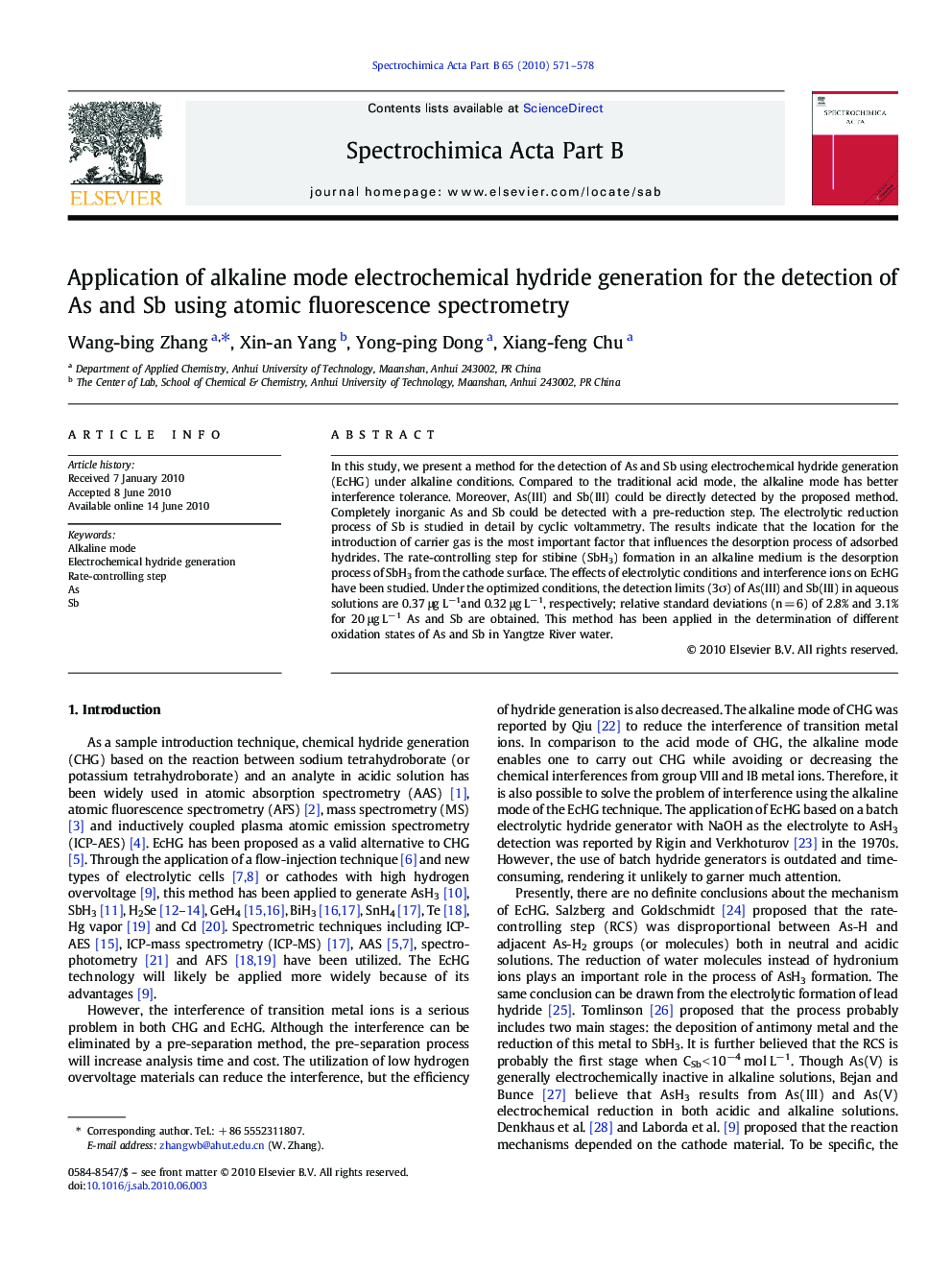| Article ID | Journal | Published Year | Pages | File Type |
|---|---|---|---|---|
| 1240432 | Spectrochimica Acta Part B: Atomic Spectroscopy | 2010 | 8 Pages |
In this study, we present a method for the detection of As and Sb using electrochemical hydride generation (EcHG) under alkaline conditions. Compared to the traditional acid mode, the alkaline mode has better interference tolerance. Moreover, As(III) and Sb(III) could be directly detected by the proposed method. Completely inorganic As and Sb could be detected with a pre-reduction step. The electrolytic reduction process of Sb is studied in detail by cyclic voltammetry. The results indicate that the location for the introduction of carrier gas is the most important factor that influences the desorption process of adsorbed hydrides. The rate-controlling step for stibine (SbH3) formation in an alkaline medium is the desorption process of SbH3 from the cathode surface. The effects of electrolytic conditions and interference ions on EcHG have been studied. Under the optimized conditions, the detection limits (3σ) of As(III) and Sb(III) in aqueous solutions are 0.37 μg L−1and 0.32 μg L−1, respectively; relative standard deviations (n = 6) of 2.8% and 3.1% for 20 μg L−1 As and Sb are obtained. This method has been applied in the determination of different oxidation states of As and Sb in Yangtze River water.
